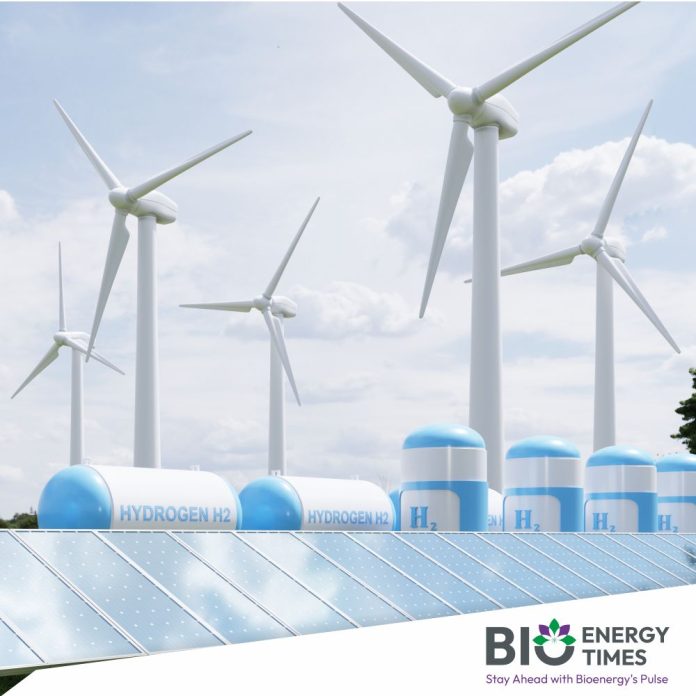With the Union Budget for 2025-26 set to be announced on February 1, energy sector leaders are urging the government to increase investments in renewable energy, bolster domestic manufacturing, offer financial support, and streamline the tax structure.
Industry leaders across the energy sector are calling for the government to prioritize solar, wind, green hydrogen, energy storage, and grid modernization investments in the upcoming budget. A common theme among these calls is the need for stronger policy support to reduce India’s dependency on imports while promoting domestic manufacturing, innovation, and energy security.
Dr. Amit Paithankar, Whole-Time Director and CEO of Waaree Energies Ltd., highlighted the importance of domestic manufacturing, saying, “The potential extension and enhancement of the PLI scheme would empower domestic companies to scale up manufacturing and accelerate progress toward achieving 500 GW of renewable power by 2030.”
Paithankar further emphasized the need for targeted tax benefits and capital incentives, suggesting that increasing export subsidies for the renewable energy sector from 1% to 5% would improve India’s global standing. He also proposed offering accelerated depreciation for core renewable assets to help the industry keep pace with technological advancements.
Government data shows India surpassed the 200 GW mark in total installed renewable energy capacity in September 2024. By November 2024, the total non-fossil fuel capacity had risen to 214 GW, marking a more than 14% increase from the previous year. Between April and November 2024, India added nearly 15 GW of renewable energy capacity, nearly doubling the 7.57 GW added during the same period in 2023.
Ratul Puri, Chairman of Hindustan Power, stressed the need to scale up investments in clean energy technologies, particularly solar and wind. “The Union Budget for 2025-26 offers an opportunity to build on this momentum and accelerate India’s energy transition,” he said, urging the budget to prioritize investments in solar, wind, green hydrogen, energy storage, and smart grid infrastructure.
Puri also called for expanding the Production-Linked Incentive (PLI) schemes for solar components to reduce import dependency, strengthen the “Make in India” initiative, and enhance energy self-reliance.
On the energy storage front, Debi Prasad Dash, President of the India Energy Storage Alliance (IESA), called for a uniform 5% GST on all battery types, aligning them with the lower GST rate for electric vehicles. He pointed out that lithium-ion batteries are taxed at 18%, while other battery types such as lead acid, sodium, and flow batteries face 28% GST, whereas electric vehicles are taxed at just 5%.
Prashant Mathur, CEO of Saatvik Green Energy, emphasized the need for financial relief for solar manufacturers. He suggested a unified GST policy on solar panel manufacturing and installations, along with preferential lending rates, to help manufacturers scale production and attract investment. Mathur also called for tax incentives and a reduction in corporate taxes for renewable energy companies to support growth in advanced technologies and manufacturing.
Naresh Mansukhani, CEO of Juniper Green Energy, called for a reduction in GST on solar panels and wind turbines from the current 12% to 5% to make clean energy solutions more affordable and speed up their adoption. “The current GST rate on renewable energy has raised tariffs for wind and solar-wind hybrid projects, making clean energy solutions less affordable,” Mansukhani said.
The renewable energy sector also recognizes the challenges of intermittency and the need for robust energy storage solutions. Srivatsan Iyer, Global CEO of Hero Future Energies, emphasized that continued financial support and a favorable regulatory environment would be essential for the growth of energy storage and grid modernization.
“India is making great strides in renewable energy; however, reaching 500 GW by 2030 will require integrating circular economy principles, infrastructure development, and innovation,” said Anup Garg, Founder and Director of The World of Circular Economy (WOCE). Garg called for fiscal incentives and infrastructure investments to reduce the cost of green hydrogen production and facilitate its large-scale deployment.
Industry leaders believe that the renewable energy sector’s growth trajectory will continue in 2025, provided that the right policy measures are implemented. Amit Jain, CEO and Country Manager of ENGIE India, noted that long-term tax incentives, faster land acquisition, and streamlined approval processes for large-scale projects are essential to maintain momentum. He also stressed the importance of a clear roadmap for energy storage and grid modernization to ensure scalability and resilience.
For detailed information and further insights, please refer to BioEnergyTimes.com, which provides the latest news about the Green Hydrogen Industry















